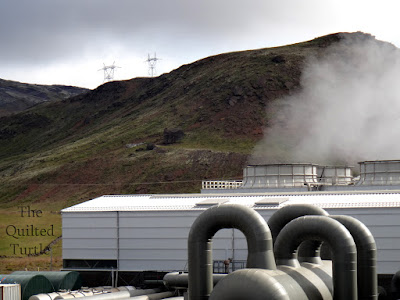The Secret Lagoon was one of mt favorite places in Iceland. It's actually the oldest swimming pool in Iceland - dating back to the late 1800s. Soaking in springs is a common pastime in Iceland. Almost every community has a pool and soaking area. It's where Icelanders get together to unwind and hangout - especially during the long winters.
And just in case we forgot, the Grim Reaper was there to make sure we remembered, "Iceland can kill you if you're stupid." Don't worry, there were other signs near by to remind us, just to be safe.
Remember, water boils at 100 degrees Celsius.
The geothermal activity in the area heats the water, which then flows into the pool. What to soak in hot water? Just position yourself near where the still-almost-boiling water flows in. (My favorite spot.) Want to be a tad cooler? Move farther way until you find the perfect temperature.
We were worried the Secret Lagoon would be overrun with tourists, but it wasn't nearly as crowded as we expected. We predicted "Mackinac in July" tourists and were pleasantly surprised with more October-like numbers. In fact, we had been told again and again that summer was Iceland's busiest season and to be ready for throngs of tourists. Thankfully, not one place, except maybe Geysir, was as busy as Mackinac Island during the high season.
I couldn't resist taking a picture of the coat-wearing life guard, or her wind-proof booth. I took these pictures with out my glasses, so it wasn't until later that I was able to read the "please don't photograph the lifeguards" sign. Oops.
I could have soaked for hours.
And yes, I did keep a close eye on the kids so they didn't get sold to trolls...
And yes, I did keep a close eye on the kids so they didn't get sold to trolls...





















































